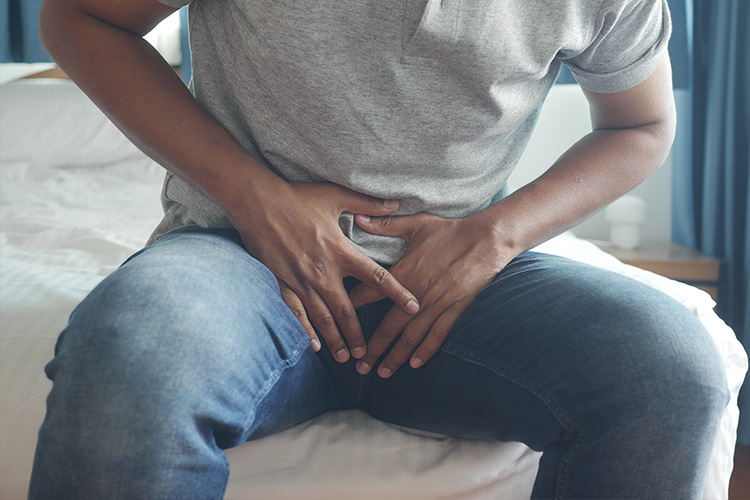Overview
Genital warts are a common sexually transmitted infection (STI) caused by certain strains of the human papillomavirus (HPV), particularly types 6 and 11. These warts appear as small, flesh-colored or gray growths in the genital or anal area. They may occur as single warts or clusters and can be flat, raised, or cauliflower-shaped. While genital warts are not life-threatening, they can cause physical discomfort and emotional distress.
The effects of genital warts vary from person to person. Some individuals may experience itching, burning, or tenderness in the affected areas. For others, the condition may remain asymptomatic but still carry the potential to spread the virus to sexual partners. In rare cases, untreated genital warts can grow and multiply, leading to complications such as discomfort during intercourse or urination.
Treatment for genital warts focuses on removing the visible growths and managing symptoms, as there is no cure for the underlying HPV infection. Options include topical medications, cryotherapy (freezing the warts), electrocautery (burning the warts), surgical excision, and laser therapy for severe cases. These treatments help reduce the size and number of warts, though recurrence is common since HPV may remain in the body.
Preventive measures, such as HPV vaccination and practicing safe sex, play a crucial role in reducing the risk of genital warts. Regular check-ups and early treatment can help manage the condition effectively and reduce the chances of transmission to others.
Table of Contents
When to See a Doctor
It is important to consult a medical professional if you notice any unusual growths or symptoms in the genital or anal area. Early medical evaluation can help confirm the diagnosis and ensure appropriate treatment.

Signs to see a doctor:
- Presence of unusual growths. If you notice small, flesh-colored or gray bumps in your genital or anal region, it is essential to have them examined, as they may be genital warts or another condition requiring treatment.
- Persistent itching, discomfort, or pain. If you experience ongoing irritation, itching, or discomfort in the genital area, it could be a sign of genital warts or a related condition that needs medical attention.
- Warts that increase in size or number. If existing growths begin to multiply or grow larger, consult a doctor immediately, as this may indicate progression of the condition.
- Pain during intercourse or urination. Warts located in sensitive areas can cause discomfort during daily activities. A doctor can recommend treatments to alleviate these symptoms and remove the warts.
- Exposure to HPV. If you suspect that you have been exposed to HPV or if your sexual partner has genital warts, it is recommended to see a healthcare provider for screening and guidance on prevention or treatment.
Seeking medical advice early not only helps manage symptoms but also reduces the risk of spreading the infection to others. A healthcare professional can provide accurate diagnosis, effective treatments, and advice on preventing recurrence.
What Type of Doctor to Seek
If you suspect you have genital warts, the first step is to consult a primary care physician or a family doctor. They can perform an initial evaluation, discuss your symptoms, and confirm whether the growths are genital warts. These doctors can also provide guidance on treatment options or refer you to a specialist if needed.
For specialized care, you may need to see a dermatologist, a doctor who specializes in skin conditions, or a gynecologist for women and a urologist for men. These specialists are trained to manage conditions affecting the genital area and can recommend advanced treatments, such as surgical removal or laser therapy. If the warts are located near or inside the anal area, consulting a proctologist or a specialist in colorectal health may also be necessary.
What to Expect from Your Visit to a Doctor
During your visit, the doctor will ask about your symptoms, medical history, and sexual activity to assess your risk factors and determine if the growths are genital warts or another condition. They will perform a physical examination of the affected area, and for women, this may include a pelvic exam to check for internal warts. In some cases, additional tests such as HPV screening or a biopsy may be recommended to confirm the diagnosis.
Once diagnosed, the doctor will explain your treatment options, which may include topical medications, cryotherapy, or surgical removal, depending on the severity of the warts. They will also provide advice on managing symptoms, preventing recurrence, and reducing the risk of transmitting HPV. Be sure to ask any questions or address concerns during the consultation to ensure you understand the next steps.
Genital Warts Treatment Options

There are several ways to treat and remove genital warts, depending on the severity and location of the condition. Your doctor may recommend one or more of the following treatments to effectively address the issue and alleviate symptoms:
- Topical creams or ointments. These are medications applied directly to the affected skin. Common prescription options include Aldara, Zyclara, Condylox, TCA (trichloroacetic acid), and Veregen. These treatments help reduce the size and discomfort of warts while addressing itching or burning sensations. It’s important to use these creams under a doctor’s supervision, as over-the-counter (OTC) medications for other types of warts (like hand warts) can be too harsh and may worsen symptoms if used on genital warts.
- Cryotherapy. Known as the “freezing” method, cryotherapy uses liquid nitrogen to freeze the warts, making them easier to remove. This procedure is quick and relatively painless, with mild discomfort during the freezing process, and is effective for external warts.
- Electrocautery. This method uses an electrical current to “burn” the warts off the skin. A specialized device delivers controlled voltage to target and remove the warts, usually requiring local anesthesia to minimize discomfort.
- Surgical excision. This involves physically cutting or excising the warts using surgical instruments. This method is recommended for large or widespread warts and is typically performed under local or general anesthesia to ensure patient comfort.
- Laser treatment. One of the most advanced and expensive options, laser treatment is reserved for severe or hard-to-treat genital warts. The procedure uses intense, focused light to destroy warts and is especially useful for warts in sensitive or hard-to-reach areas.
Treatment for genital warts should always be supervised by a medical professional to ensure safety and effectiveness. While these methods can address the physical symptoms, addressing the underlying human papillomavirus (HPV) infection and taking precautions to prevent recurrence are equally important. Regular follow-ups and maintaining good personal hygiene contribute to successful treatment outcomes.
Genital Warts Prognosis
The prognosis for genital warts depends on the chosen treatment and the patient’s overall immune response. While treatments can effectively remove visible warts, they do not cure the underlying HPV infection, meaning warts can recur. Here’s an overview of the prognosis for each treatment option:
- Topical creams or ointments. These treatments are effective for small, external warts and typically lead to their resolution over a few weeks. However, multiple applications and strict adherence to instructions are needed for the best results. Some patients may experience mild irritation or redness during use.
- Cryotherapy. This method offers a high success rate for external warts, with many cases resolving after a few sessions. It is a quick and minimally invasive option, though recurrence is still possible, requiring follow-up treatments.
- Electrocautery. Electrocautery is effective for larger or stubborn warts, providing immediate removal. Healing may take a few weeks, and the risk of recurrence depends on the extent of the warts and the patient’s immune system.
- Surgical excision. This option provides a definitive solution for large or extensive warts. While it is highly effective, recovery may involve some discomfort, and there is a small chance of scarring or infection.
- Laser treatment. Laser therapy is very effective for severe or internal warts, especially in cases where other treatments have failed. Recovery time varies, and it is typically more expensive, but it offers excellent results for complex cases.
With proper treatment and follow-up care, most patients achieve relief from visible warts. However, because HPV remains in the body, lifestyle changes, vaccination, and regular check-ups are essential to reducing the risk of recurrence and complications.


